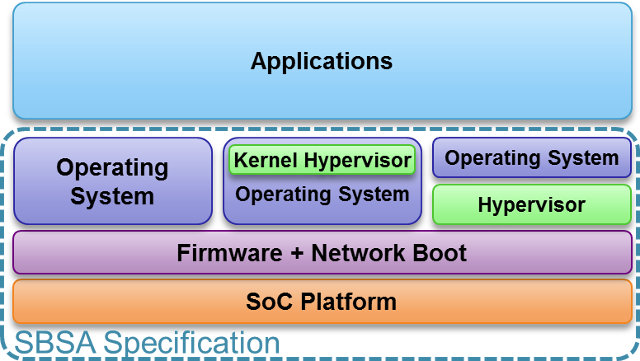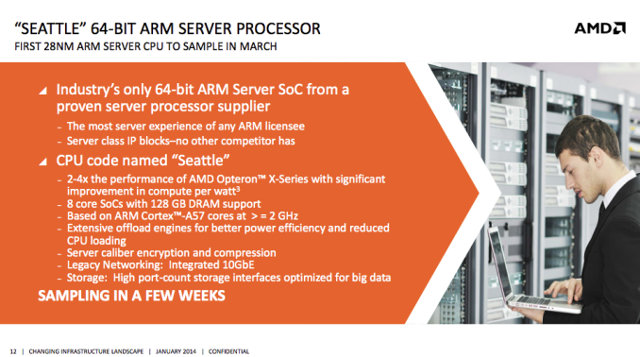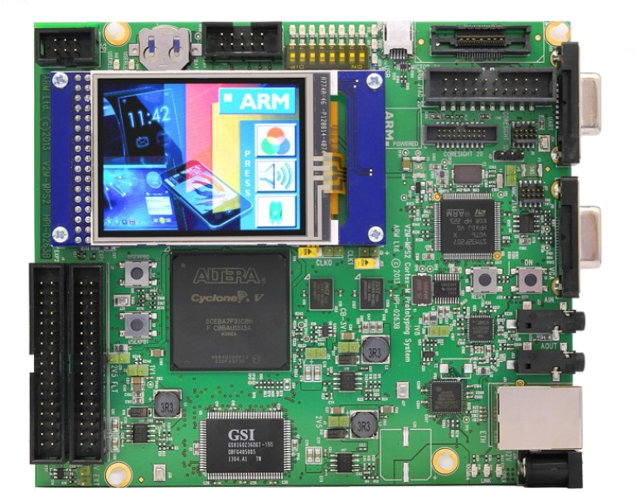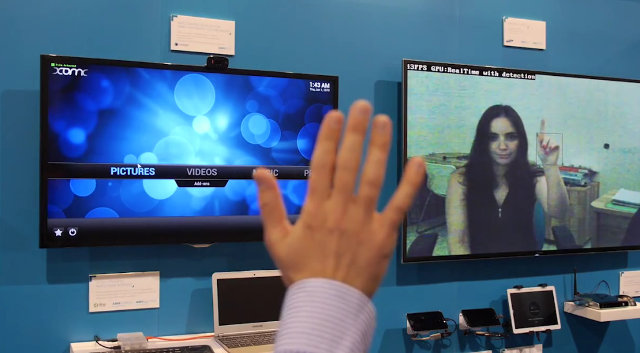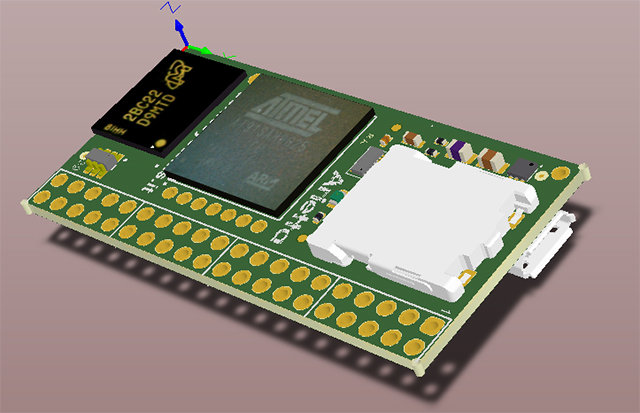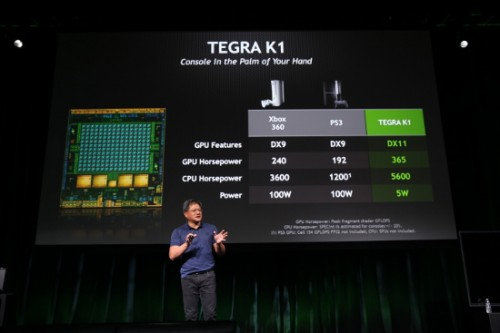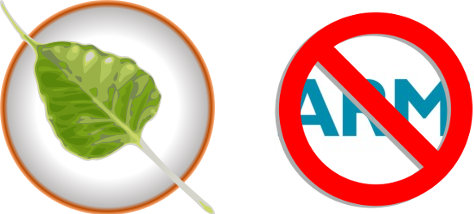64-bit ARM based servers should hit the market later this year or earlier in 2015 with SoCs such as Applied Micro X-Gene or AMD Opteron A1100. ARM still has the lead in terms of efficiency with a lower dollar per watt ratio, but Intel is closing in with their new Avoton server-on-chips. However, there’s one aspect where Intel is clearly in the lead: standardization and compatibility. ARM is very flexible, and allow SoC designers to create more or less what they want, but it comes at the cost that most ARM based systems are not capable of running mainline Linux, and instead use vendor trees. With many applications, that may not be critical, but when it comes to data-centers, companies want to be able to run the latest Linux version with the latest security patches as soon as possible, and want to lower the total cost of ownership (TCO), so […]
AMD Opteron A1100 Server SoCs Feature 4 to 8 ARM Cortex A57 Cores
A few months ago, AMD published a roadmap showing AMD “Seattle” Server CPUs based on ARMv8 64-bit architecture were planned for H2 Q2014. The company has now announced the first series of processors that will be based on ARM Cortex A57: AMD Opteron A1100 Series, as well as the corresponding development platform at the Open Compute Project Summit in San Jose, California. Key features of AMD Opteron A1100 Series processors: 4 or 8 core ARM Corte-A57 processors Up to 4 MB of shared L2 and 8 MB of shared L3 cache Configurable dual DDR3 or DDR4 memory channels with ECC at up to 1866 MT/second Up to 4 SODIMM, UDIMM or RDIMMs 8x lanes of PCI-Express Gen 3 I/O 8x Serial ATA 3 ports 2x 10 Gigabit Ethernet ports ARM TrustZone technology for enhanced security Crypto and data compression co-processors On the software side, the company mentionned it is a […]
ARM Unveils Cortex-M Prototyping System Based on Altera Cyclone V FPGA
Before micro-controllers or processors are manufactured, simulation is performed in (usually) expensive boards based on FPGA chips from Altera or Xilinx, and once designers have found the system to work as expected, they can move to the next phase and work on the actual silicon. ARM has just released V2M-MPS2 Cortex-M Prototyping System for MCU / SoC / ASIC designers working on Cortex-M processors. Key features: Altera Cyclone V FPGA with ~150K LE 4x 2MB ZBTRAM (32-bit each, with two of them forming a 64-bit memory). ZBT = Zero Bus Latency 16MB PSRAM (16-bit) Touch screen LCD module Range of hardware interfaces – UART, VGA (4 bit per color), SPI, audio (I2S), Ethernet, LEDs, buttons I/O expansion ports (GPIO) FPGA images for Cortex-M processors Example project for Cortex-M0 DesignStart (processor IP has to be licensed separately) USB connection for downloading FPGA images and program image to micro SD card on board […]
ARM Mali GPU Demos at CES 2014 – 4K 3D UI and Games, ASTC Texture Compression, XBMC + Gesture Recognition, and HEVC Video Decoding
Phill Smith, Demo Manager at ARM, has filmed and uploaded four very interesting demos of what new features will be possible thanks to new generation ARM Mali-450 and Mali-T6xx GPUs including 4K 3D user interfaces and games, ASTC texture compression, and OpenCL accelerated gesture recognition and HEVC / H.265 video decoding. 4K Resolution 3D User Interface and Game Demo The first demo showcases a Geniatech box (ATV1800?) powered by AMLogic AML8726-M8 featuring an ARM Mali-450MP6 GPU running Android with a user 4K 3D interface designed by Autodesk using Scaleform UI. The rest of the video shows Timbuku 3D gaming demo running at 3840×2160 (4K2K) @ 24 fps. The frame rate appears to be low, but that’s because the box is using HDMI 1.4, which limits UHD output to 24fps. 2160p60 is only available via HDMI 2.0. ASTC Compression Demo on Samsung Galaxy Note 3 3D Textures are getting bigger and […]
9.99 Euros Arietta G25 Board Features Atmel SAM9G25 (ARM9) Processor
Acme Systems Aria G25 is a tiny system-on-module (SoM) based on Atmel SAM9G25 that sells for as low as 24 Euros. The company is now working on an smaller and lower cost ARM Linux module based on the same processor called Arietta G25. The board targets the hobbyist market and IoT (Internet of Things) applications. Arietta G25 specifications: CPU – Atmel AT91SAM9G25 ARM9 @ 400Mhz System Memory – 128 MB DDR2 Storage – MicroSD Socket for up to 32GB bootable Linux microSD (not included) I/Os and other available pins (via 2.54mm though holes): USB – 1x USB 2.0 host/device (High Speed), 1x USB 2.0 host(HS), 1x USB 2.0 host (FS) Serial – 1x UART (RXD,TXD,RTS,CTS), 1x I2C, 1x SPI bus 1 with 2 chip select (5 to 50 MHz) 4x PWM 4x 10-bit A/D converters 1-wire bus 5V, 3.3V, GND, VBATT signals Header for Wi-Fi module Power – Single 3.3 […]
NVidia Announces Tegra K1 32-bit & 64-bit SoCs with a 192 Core Kepler GPU
Nvidia announced their newest mobile SoC at CES 2014, but instead of calling it Tegra 5, they went for Tegra K1, as it’s the first to feature a 192 cores GPU based on Kepler architecture, the same as used in PC graphics card. There will be several version of the chip one based on four Cortex A15 cores, one featuring a dual core Nvidia Denver CPU based on ARMv8 64-bit architecture, and Tegra K1 VCM for the automotive market. The company showcased the power of their new processor with an Unreal Engine 4 demo and the same face demo showed last year on an Nvidia GPU card, and Tegra K1 easily outperform older generations games console such as Xbox 360 and PlayStation 3, at and the same time consume just about 5 Watts of power, versus 100 Watts for Microsoft and Sony consoles. The GPU in the Tegra K1 also […]
Top 10 Posts of 2013 and Stats on CNXSoft Blog
This is the last day of the year, and just like in 2012, I’ll look back on the main trends of this year, post a list of the top 10 posts of 2013 on cnx-software.com, and add some fun stats about the site and my visitors. 2013 has been the year of quad core media players and mini PCs, especially those based on Rockchip RK3188, XBMC is now featured in many Android STBs, “big.LITTLE” and “Octa-core” have been the buzz words on the application processor front, Google has entered the HDMI TV sticks market with the ChromeCast, and is competing with Miracast / DLNA TV dongles, we’ve gotten more and more low cost Linux development boards, crowdfunding has almost gone mainstream, and the Internet of things has started to take off thanks to new technologies such as Bluetooth Low Energy. I’ve compiled the list using data from Google Analytics, filtered […]
Bodhi Linux Distribution Has Dropped Official ARM Support (For a While)
Linux is omnipresent in your life via gadget running Android, but in the desktop world, as many of you already know, it’s not straightforward to get a Linux distribution fully work on ARM platform, because each ARM SoC or board is different, and above all binary blobs used for GPUs, VPUs, Wi-Fi and Bluetooth chips can make it extremely complex, even impossible, to have a fully working ARM Linux distribution for a given hardware. After considering that ARM Linux required too much effort, and was not used by many people, Bodhi Linux developers decided to call it a day in October this year, and dropped official support for ARM hard-float images: Effective immediately Bodhi is dropping official support for ARM devices. What does this mean? We will no longer be advertising an ARMHF download link on our front page Updates to ARM images will be infrequent/not at all. The ARM […]


